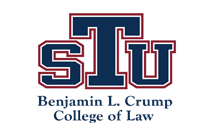St. Thomas Law Review
First Page
441
Document Type
Article
Abstract
The purpose of this article is to express the reasons why copyright statutes should be overhauled to provide explicit rights reserved to the public, as opposed to the present structure of copyright law, which provides rights to a copyright owner, subject to the many exceptions that have sprung up over the past few years. Some of these exceptions, which seem to have engulfed the basic premise of copyright theory, are the broadly framed but vague protections offered by the fair use doctrine. These rights include the right of a lawful owner of a copy to sell or otherwise dispose of the copy without the authority of the copyright owner, and the right of creative persons to independently create any work, even if it ends up being an exact copy of the original version. The fact that authors enjoy increased term lengths for their copyrighted items essentially increases restrictions to the general public regarding property rights. Moreover, the exclusivity that the copyright holders are now able to enjoy does not seem to benefit anyone but large companies and perhaps Congress. This article will clarify why and how copyright law should be revamped, by focusing in on one type of creative work, cartoon characters. Contemporary theories of copyright law will be contrasted to historical underpinnings and case law concerning the copyrightability of characters. Additionally, this Comment will analyze the migration of cartoon characters into trademark law. Part I reviews the role played by federal copyright law in the area of cartoon characters, and assesses the impact that the characters will have on the economy in the coming years as artists, individuals, and businesses begin to prepare for the release of extremely famous characters into the public domain, as they are being taken out of concealment from public use. Likewise, this Comment will point out that although children's entertainment is a competitive market internationally, there are still many opportunities for individuals and corporations here in America, but only if we loosen the rigid and complex laws currently in place. To be sure, if the public is not allowed to parody, copy or transform cartoon characters when they are legally supposed to enter the public domain, when the depictions finally do enter the public domain, the public will have no choice but to exploit a company's good name or to place the cartoon characters in situations they otherwise would not find themselves in. In Part II, the article will provide an overview of the intellectual property protections available to characters and will focus on how corporations are preparing themselves and protecting ownership rights to their characters. The last aspect of Part II highlights how corporations are beginning to control other areas of the character industry in order to secure the most market share now, before it is too late and they lose total control over their character monopolies. What is not protected by copyright seems to be covered by either trademark protection or unfair competition laws, and the article will also observe that in the end, what is actually being sent into the public domain amounts to very little. Finally, Part III of the article proposes an alternative to our current system of copyright law with regard to the doctrine of fair use. The proposal centers on the current circuit split regarding the fair use doctrine as applied to trademark law, and specifically the adoption of the fair use law currently in place in the Second, Tenth, and D.C. Circuits, in which the courts require a showing of willful infringement before profits are awarded. This theory will prove that the public may utilize characters, while simultaneously providing corporations the protection and incentives they need to continue to profit in a competitive marketplace. It should also drastically reduce the amount of litigation currently flooding our system regarding this gray area. In conclusion, the article will demonstrate that conflict arises when a copyright ends, forcing intellectual property owners to rely largely on trademark protection, and therefore, copyright law should integrate with some of the successful trademark theories. This alternative will enhance the uniformity of intellectual property laws, decrease confusion among judicial circuits considering these issues today, and provide stability and reassurance to individuals and small businesses who gamble everyday when they attempt to paint a picture of a cartoon on a preschool wall or distribute depictions of cartoon characters to the students in their classes for educational purposes.
Recommended Citation
Laurie Richter,
Reproductive Freedom: Striking a Fair Balance between Copyright and Other Intellectual Property Protections in Cartoon Characters,
21
St. Thomas L. Rev.
441
(2009).
Available at:
https://scholarship.stu.edu/stlr/vol21/iss3/6

